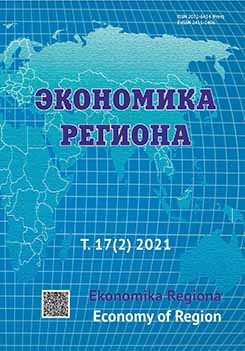Agri-food Exports and Challenges of Foreign Markets for a Small region: a Network Approach
Agri-food Exports and Challenges of Foreign Markets for a Small region: a Network Approach
Author(s): Roberta SISTO, Alba Marseglia, Edgardo SicaSubject(s): Economy
Published by: Институт экономики Уральского отделения Российской академии наук
Keywords: trade flows; small region; Social Network Analysis; agri-food sector; exports; foreign markets; small and medium enterprises; two-mode networks; Chamber of Commerce; Foggia; Italy
Summary/Abstract: Over the last decades, the agri-food sector has been involved in a substantial process of internationalisation. For many agri-food firms, internationalisation has become a significant element of competitiveness and an essential condition for their survival and success in spite of the possible initial difficulties in competing and organising activities in uncertain and complex environments. These challenges concern mainly agri-food small and medium enterprises (SMEs) that, due to their size, are in a more vulnerable position in relation to trade barriers compared to larger firms. Based on these premises, we investigated the structure of the agri-food exports of a small region by exploring its characteristics and evolution over time. While this research is relevant per sé, it can also explain the macroeconomic dynamics of the whole area and determine the further development of agri-food exports of a small region to non-EU countries. The analysis concentrates on exports to extra-EU countries from agri-food firms located in the province of Foggia (the south-east of Italy), a small area characterised by a large presence of SMEs and micro firms that are mainly devoted to agricultural production and food processing. To answer the research question, we employ the social network analysis, a method increasingly used for analysing international trade patterns. The use of this methodology has allowed us to conduct an in-depth analysis of firms and countries that occupy a strategic position in the network. These actors are crucial for the network’s survival since their removal could make the network more fragmented and disconnected. The analysis has been conducted in a dynamic way by exploring the characteristics of the network in 2014–2019, allowing us to assess its evolution over time. The results show that the structural properties of the analysed network have remarkably enhanced over time. However, the current network structure is not satisfactory yet since it relies, for the most part, on the connections among a few leading firms and a limited number of destination countries.
Journal: Экономика региона
- Issue Year: 17/2021
- Issue No: 2
- Page Range: 607-618
- Page Count: 12
- Language: English

